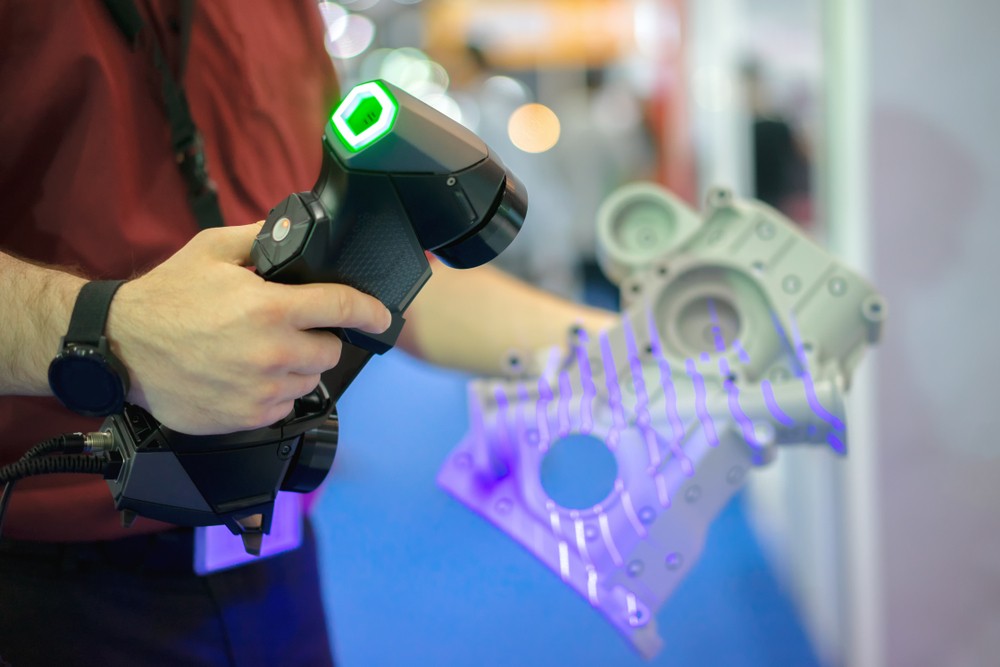The fascinating realm of 3D scanning technology has unlocked new possibilities, changing the way we capture and recreate the world around us. No longer confined to industrial applications, 3D scanners have become accessible to the everyday consumer, offering a wealth of opportunities for innovation, creativity, and practicality. Whether you’re a hobbyist exploring a new passion or a professional seeking to optimize workflow, understanding how 3D scanners work and how to make a savvy purchasing decision can be tremendously beneficial.
3D Scanning Technology
3D scanning involves capturing the shape and texture of an object by collecting data on its physical appearance and translating that information into a digital model. There are several types of 3D scanning technologies available, each with its unique method and suited for different applications:
- Laser Triangulation: This method uses a laser beam projected onto an object’s surface. The scanner’s sensors detect the reflection, providing precise measurements. Perfect for small to medium-sized objects, laser triangulation offers high accuracy but can be expensive.
- Structured Light: By projecting a pattern of light onto an object and analyzing the deformation of this pattern, structured light scanners can create highly detailed models. They are known for speed and accuracy, suitable for a range of applications from industrial design to personal art projects.
- Photogrammetry: Leveraging the power of ordinary digital cameras, photogrammetry requires the user to take multiple photographs of an object from different angles. Software then stitches these images together to form a 3D model. This method is cost-effective as it requires minimal specialized equipment, but it may not be as precise as other techniques.
- Contact Scanning: Utilizing a touch probe, contact scanners trace the surface of an object to gather data. This method is less common for consumer use due to its direct contact requirement and slower process.
Understanding these technologies helps consumers choose the right 3D scanner tailored to their needs, whether they prioritize cost, speed, precision, or versatility.
Practical Applications for Consumers
3D scanners present a multitude of applications, making them attractive for various consumer needs. From personal hobbies to professional aspirations, here are several remarkable ways 3D scanners can be used:
- Home Projects and Decor: Transform your home décor by creating custom pieces or replicas of existing items. Scan objects and replicate them using 3D printing to add personal flair without the expense of high-end design products.
- Art and Creativity: Artists can digitally capture their sculptures, modify designs, and produce multiple renditions. This opens new avenues for creativity, allowing for experimentation with different mediums and styles.
- Replacement Parts and Repairs: Impressively practical, 3D scanning allows consumers to create replacement parts for broken items, saving money on purchasing new ones. Simply scan the required part and produce a replica using a compatible 3D printer.
- Healthcare and Prosthetics: Customized prosthetics and orthotic devices can be created with higher precision and comfort. While this application often requires specialized scanners and printers, it showcases the vast potential of 3D scanning technology to change lives.
- Education and Learning: Bring lessons to life with educational models and interactive exhibits. Students can engage with tangible models, enhancing their understanding of complex subjects.
These applications demonstrate how 3D scanners can serve practical and creative purposes, making them a sound investment for a diverse range of interests and needs.
Factors to Consider When Purchasing a 3D Scanner
Before investing in a 3D scanner, it’s crucial to evaluate a few key factors to ensure you make an informed decision that aligns with your requirements and budget:
- Purpose: Define what you aim to achieve with the scanner. Is it for hobbyist projects, professional work, industrial applications, or educational purposes? Understanding your primary goals will help narrow down the options.
- Accuracy and Resolution: Depending on your needs, you may prioritize either accuracy or speed as these factors often trade off against each other. Higher accuracy scanners produce more detailed models but might come at a higher cost.
- Portability: How and where you plan to use the scanner can influence the importance of portability. Some models are handheld, while others are stationary. Consider whether you need a lightweight scanner for fieldwork or a stable system for thorough detail capturing in a controlled environment.
- Budget: Your budget significantly narrows down your options. Fortunately, 3D scanning has become more affordable over time, with models available for different financial capabilities. Weigh the cost against the features you require to find the best match.
- Ease of Use: Particularly important for beginners, a user-friendly interface and intuitive software can dramatically enhance your experience. Some scanners offer extensive customer support and learning resources to facilitate your journey.
- Compatibility: Ensure the scanner you choose is compatible with your computer system and any 3D printers you might own. Check for supported file formats, as these can affect workflow and output options.
Weighing these factors can lead to a satisfying purchase that enriches your projects without unnecessary expense or frustration.
Noteworthy 3D Scanners for Consumers
With advancing technology, numerous 3D scanners in the market cater to varying consumer needs. Here are a few noteworthy options to consider:
- Shining 3D’s Einscan SE: Ideal for beginners and hobbyists, this desktop scanner offers a decent balance between performance and affordability. With a user-friendly interface, it provides fair accuracy suitable for moderate projects.
- Matter and Form V2: This affordable and portable scanner is great for hobbyists looking for a compact option that delivers good quality scans for the price. Its collapsible design is perfect for storage-conscious users.
- CREAFORM Go!SCAN 20: Professionals looking for high precision may consider the CREAFORM Go!SCAN 20. Although on the pricier side, it offers fast, accurate results suitable for expert applications like reverse engineering and quality control.
- Occipital Structure Sensor: A unique option for mobile device users, this scanner attaches to an iPad, turning it into a portable scanning powerhouse. It’s highly suitable for on-the-go applications and users who prioritize convenience.
- XYZprinting Handheld 3D Scanner 2.0: Offering a versatile and budget-friendly solution, this scanner excels in capturing medium-sized objects with reasonable detail. It’s a solid choice for those in search of affordability without significant trade-offs in performance.
Choosing among these options involves evaluating the trade-offs between price, performance, and convenience in the context of your specific needs.
The evolution of 3D scanning represents an exciting proliferation of possibilities for consumers. From enhancing creativity and streamlining workflows to enabling custom solutions and repairs, these devices offer an unparalleled opportunity to engage with the digital and physical worlds in dynamic ways. With an understanding of the technology and a clear sight of one’s objectives, consumers can embark on a rewarding journey into the realm of 3D scanning, equipped to make informed, savvy purchasing decisions that align with their unique aspirations and project goals.



